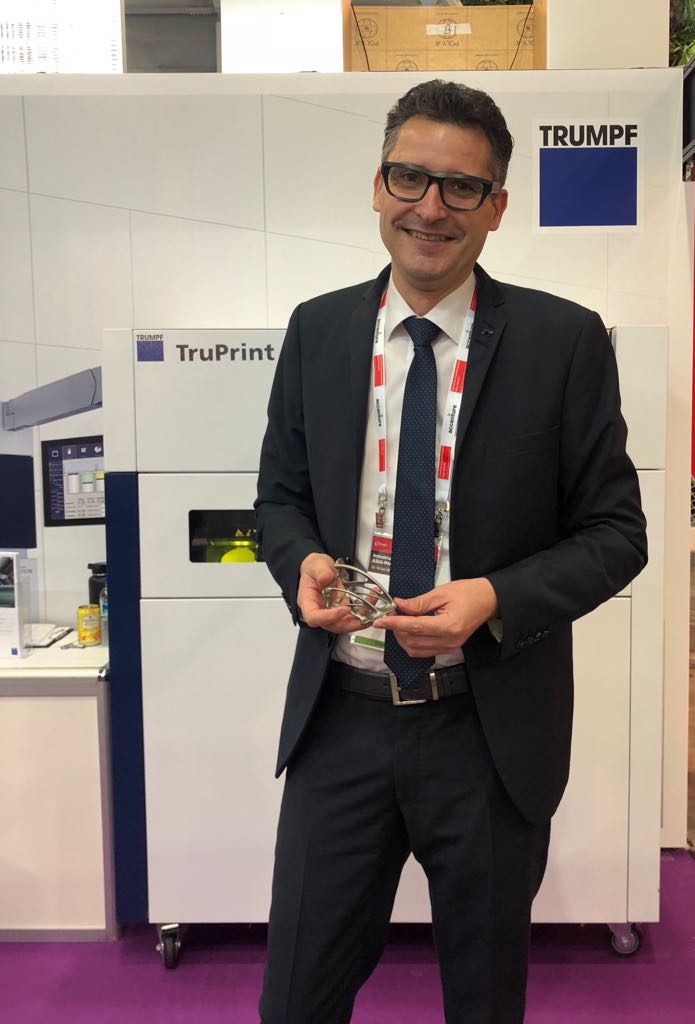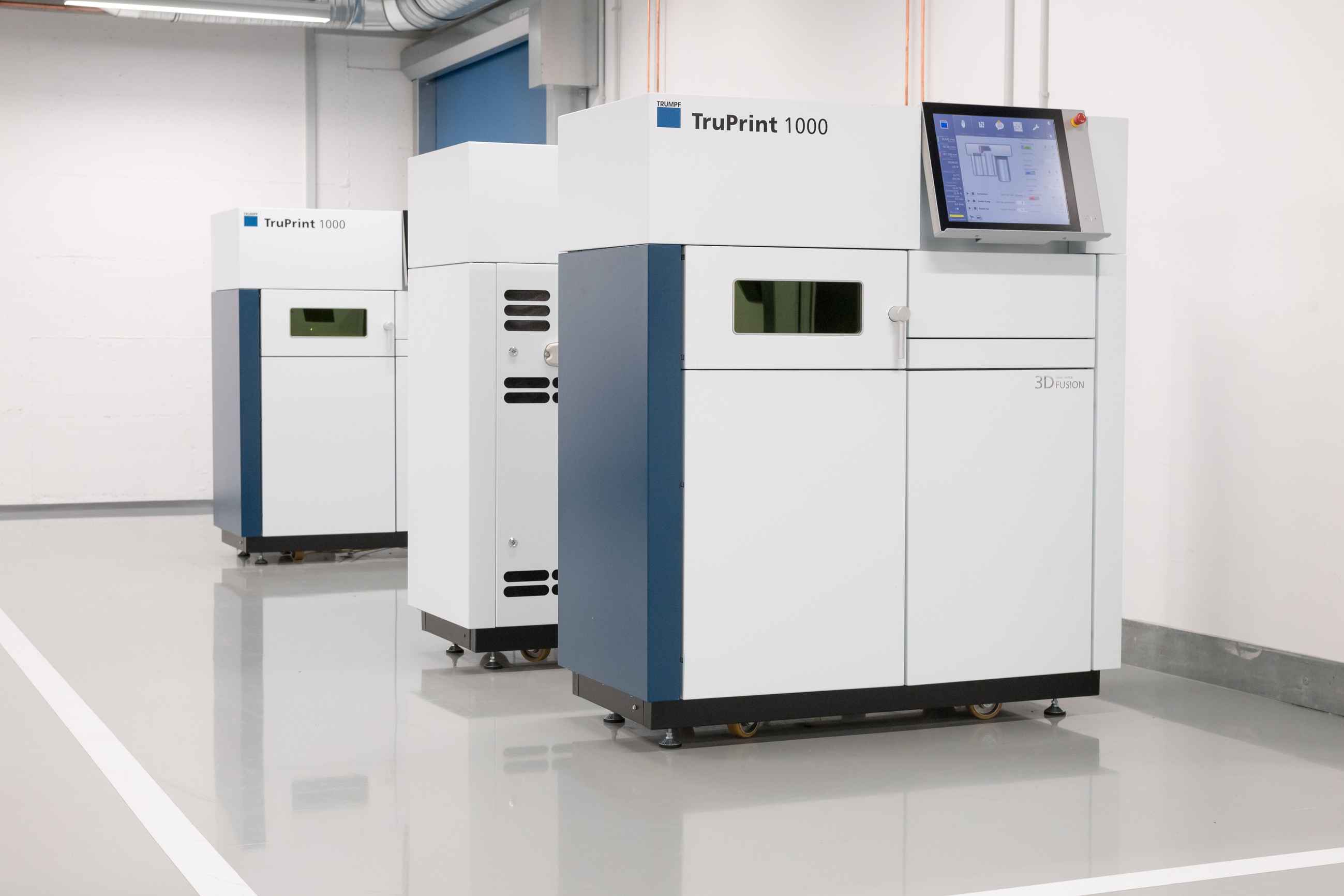By: Kathryn Gerardino-Elagio

Markus Lindemann, Head of Laser Technology Asia Pacific, TRUMPF
Additive manufacturing (AM) is one of the hottest topics for designers and manufacturers today. It has tremendous potential to influence products designs in many industries. But how do we get there? To those who can benefit from it must take advantage of this technological advancement, whilst others need to brainstorm ways that perhaps could help them out in one way or another.
In an exclusive interview with INTERNATIONAL METALWORKING NEWS FOR ASIA, Markus Lindemann, Head of Laser Technology Asia Pacific, TRUMPF Pte Ltd shares his proficiency in additive manufacturing and encourages customers to have an open mind set. Markus is not inciting a big bang approach and throwing money. Instead, he urges customers to try new things and improve along the way. Many are increasingly interested in new technologies with clear use case, but most are still not ready to invest broadly. Markus’ goal is to educate readers about the potential value of additive manufacturing.
IMNA: What technologies are you developing that will allow for the ubiquitous use of additive manufacturing?
MARKUS: TRUMPF is developing two additive manufacturing technologies: Laser Metal Deposition (LMD) / Laser Cladding which is a powder nozzle technology and Laser Metal Fusion (LMF) which is a powder bed technology.
The advantage of Laser Metal Fusion is that it allows you to build complex and unique-shaped metal 3D parts. But the real challenge here is that once you start optimising your parts using power bed technology, you can’t go back to conventional technology. That means if you decide to optimise the advantage of LMF, you can’t change and use any other manufacturing technology. Therefore, you must have an open mind set in order to design the most competitive part by using additive manufacturing. Any compromise will lead to a higher cost.
The advantage of Laser Metal Deposition is to build up material on a prefinished 3D parts and mix different material within the LMD processes. The build rate of LMD is usually higher since the accuracy and surface roughness are typically not as good as of an LMF process. LMD is also very often used for hard facing of surfaces in order to increase the live time of new parts.
When you talk about AM technology, you must always think about the whole process chain and not just having subtractive processes and additive processes. Think of what you need to do in order to get the final part. Sometimes there are assembly parts that have four, five or even more different production steps. With additive you might have just have one part which will provide you the same result. You reduce the complexity in the manufacturing process chain and you are able to make the parts more compact with less weight.
IMNA: Describe how additive manufacturing will now change the way companies in Asia manufacture.
MARKUS: Additive manufacturing is not only for Asia. It’s a global trend. Europe, America and countries in Asia are heading into this direction because of they see the unique advantages of additive manufacturing technologies. AM will play a pivotal role in complimenting traditional subtractive manufacturing, but it needs to be developed. It requires first of all open minded people in the management and design departments for it to become a normal production technology; like what we have in today’s machining, EDM and even laser cutting.
IMNA: Characterise the importance of additive manufacturing to companies in Asia.
MARKUS: If you want to be competitive in the near future, you need to invest into AM because the benefits for certain parts are tremendous; and if you are not able to offer this technology, you will be just out of the game. All companies in Singapore are taught how to use additive manufacturing to optimise their components and parts in the future. This is a long term goal, and as I said it needs people who will learn what it means to build in additive and adapt this knowledge to their parts’ design. TRUMPF is supporting this idea. We train people and share information about additive technologies in order to have more individuals in this field changing the course of designing. The Singapore Government is doing the same including institutes such as ARTC, IMRE and SIMTech, they all support clients to optimise their parts for additive manufacturing. The more people know about the advantages of this technology, the higher the chance that they are able to change the geometry for additive in the future.
IMNA: Can hybrid additive become cost-effective?
MARKUS: TRUMPF have a long history of hybrid machines, we have many years of experience developing punching machines with a laser cutting head - this is also hybrid. For some industries it is quite interesting, especially when a company needs to be flexible and they have low production volume. But there are also big players who are running a couple of machines of each type.
In my point of view, it is better to have a pure additive machine and a pure subtractive machine. The hybrid machine is just interesting for a certain group of customers that need to be very flexible. For the customers with huge volume, I always think it’s better to have different technologies with different machines. The advantages of having a combined machine - like Okuma combining milling and laser cladding - can be remarkable, if you really have an advantage in combining these 2 processes within one machining process. From my point of view these applications are quite limited today but then again: we never know what’s coming next. New possibilities will lead to a new demand, also for hybrid machines.
IMNA: Talking about laser, would you say that laser systems were running in factories long before anyone was talking about Industry 4.0? How is laser fundamental for Industry 4.0?
MARKUS: Industry 4.0 is a development in any manufacturing process, not only for lasers. For lasers it is especially interesting because lasers are very flexible. Since it’s a flexible tool, you can just change the programming and do different things with one laser source. At TRUMPF, we offer a machine that can do welding, cutting and laser cladding. What you need is just to have the machine configuration for 3 technologies and you can switch between these 3x laser technologies very fast. With Industry 4.0 you might be more flexible to use these different technologies more efficient in your factory.
IMNA: What are the biggest advantages of lasers?
MARKUS: The biggest advantage of laser is flexibility. There are so many laser applications outside the manufacturing process that shows you how powerful laser is. TRUMPF is just focusing in lasers for industrial production and that’s already a huge topic in the automotive industry, medical devices, semiconductor, electronics businesses and many other industries. This industry is growing every year, and every year there are new applications coming up that has never been done before and thought-provoking. This enables the producer to create smaller and flexible modern devices with new features.
IMNA: With TRUMPF solutions in mind, what can you advise our readers in Asia who are thinking of implementing Industry 4.0 in their shop floors but are hesitant?
MARKUS: The major point is to be open for cooperation and share the information with experienced people. If you just look at your own data, you may have a limited database; but if you share your data with a professional company who has success with other companies as well, they can analyse your data and give you feedback – this is much more powerful than any company who do it by themselves. People in the management, especially in the IT departments, should be open for that. Level the risks and the advantages, and see how beneficial these advantages are for your company as compared to the risks.















